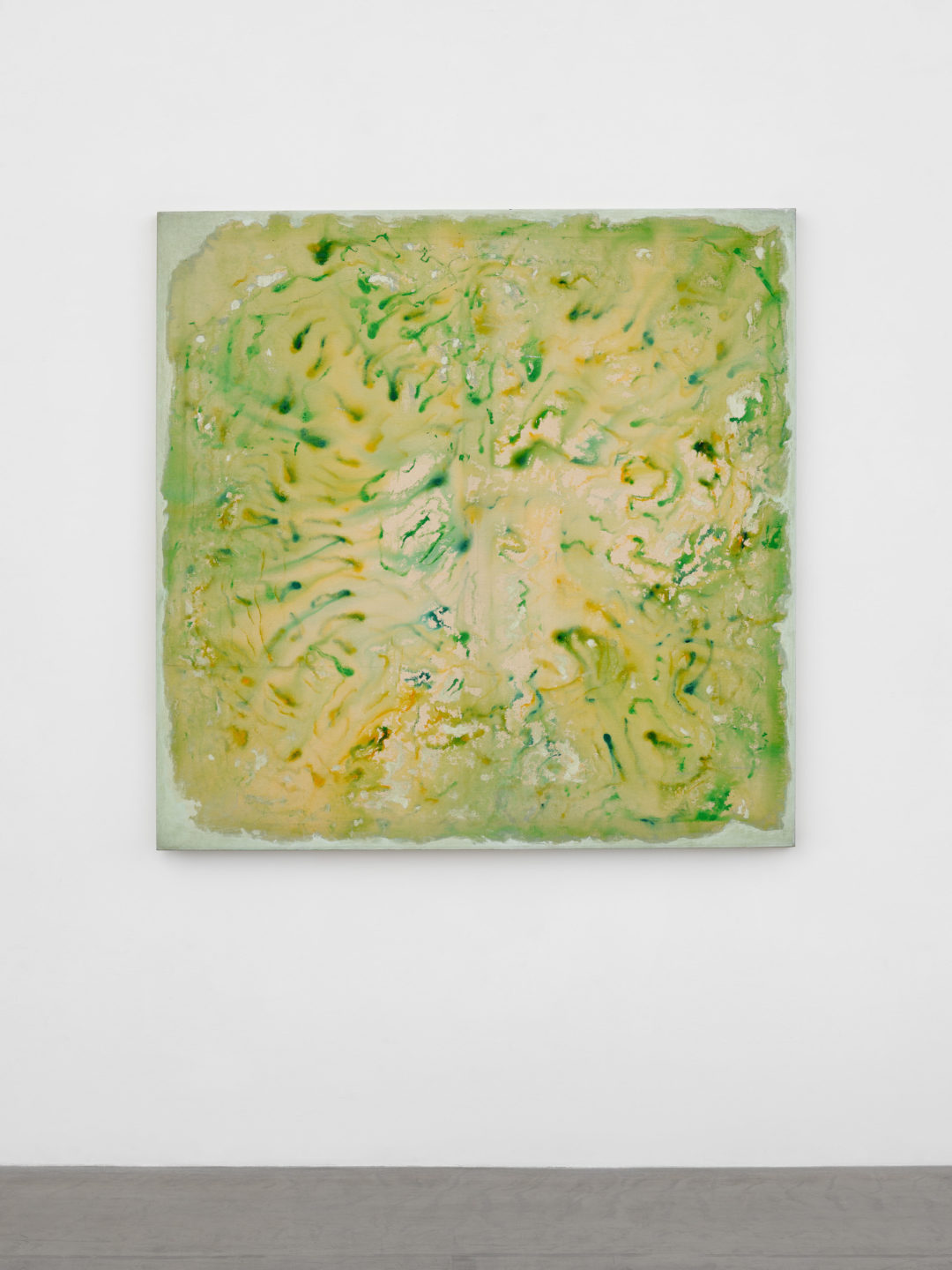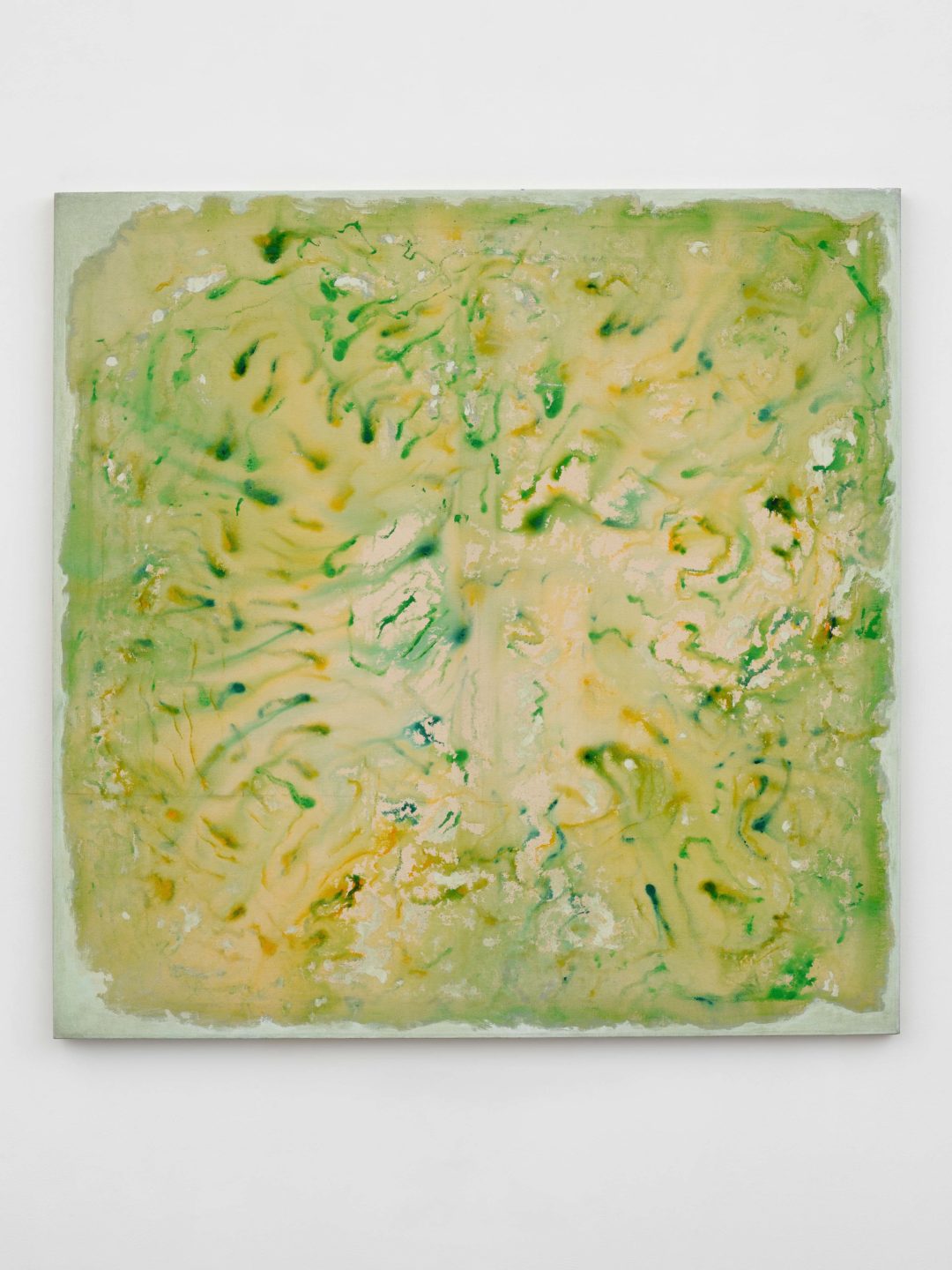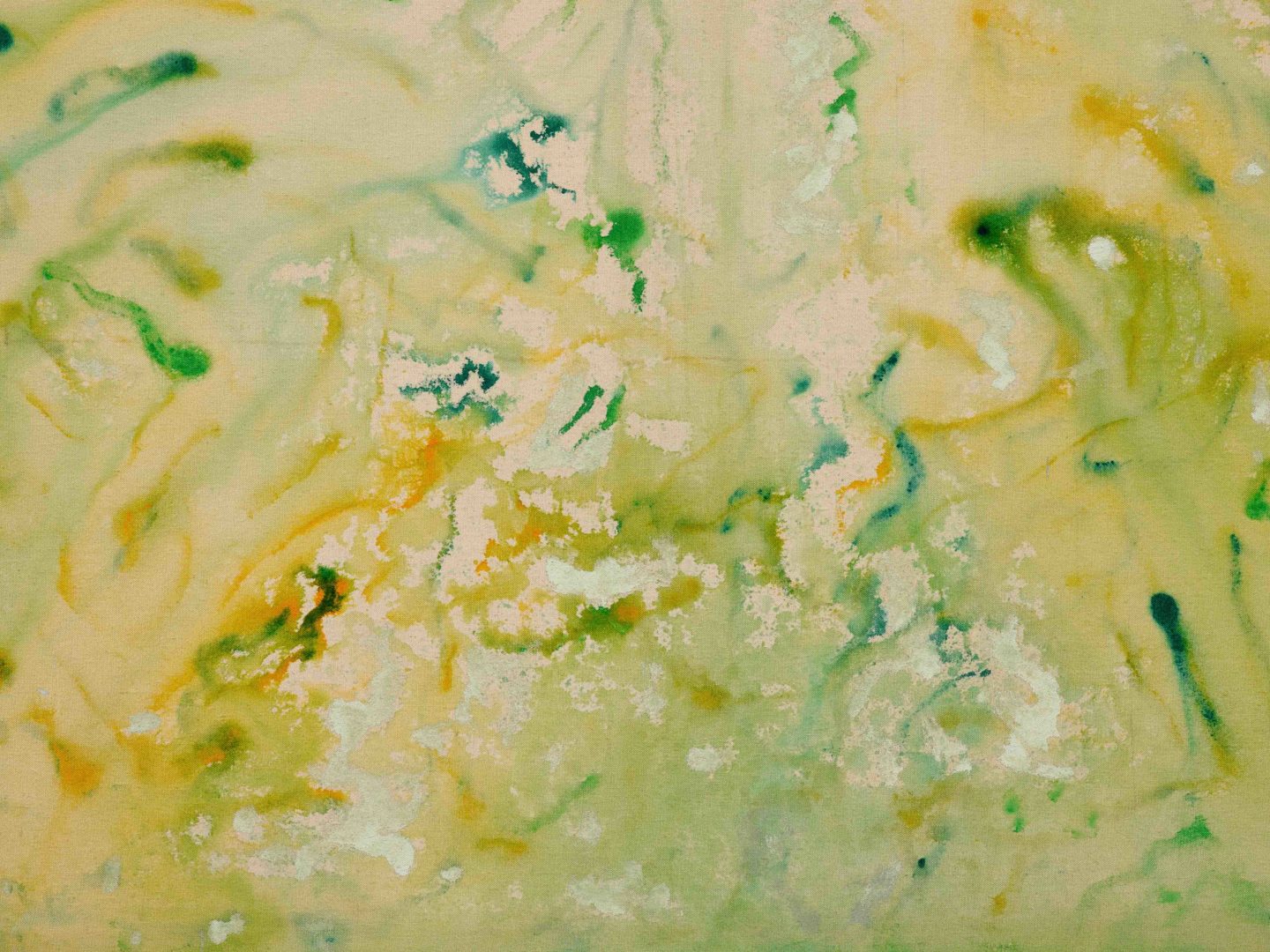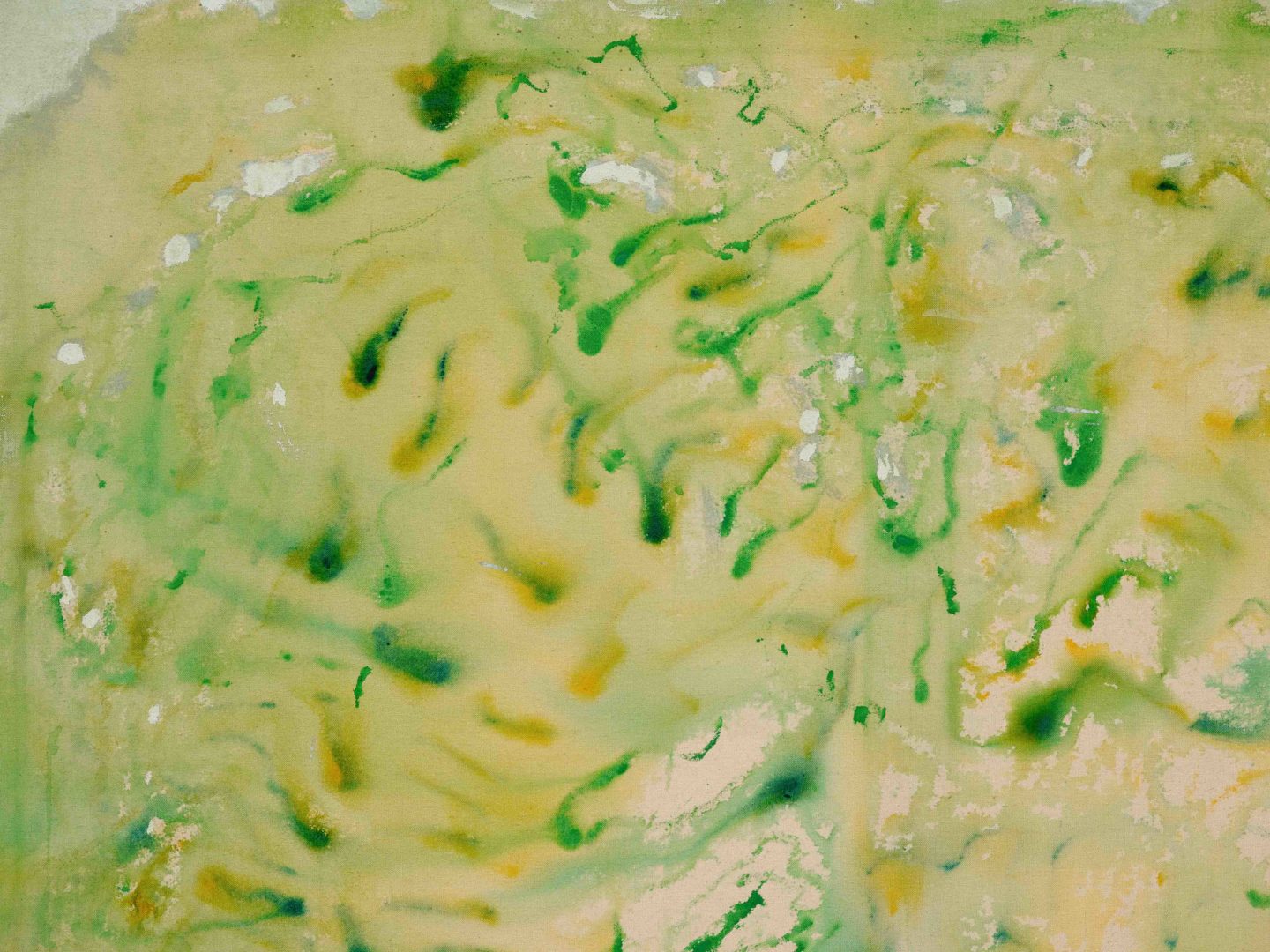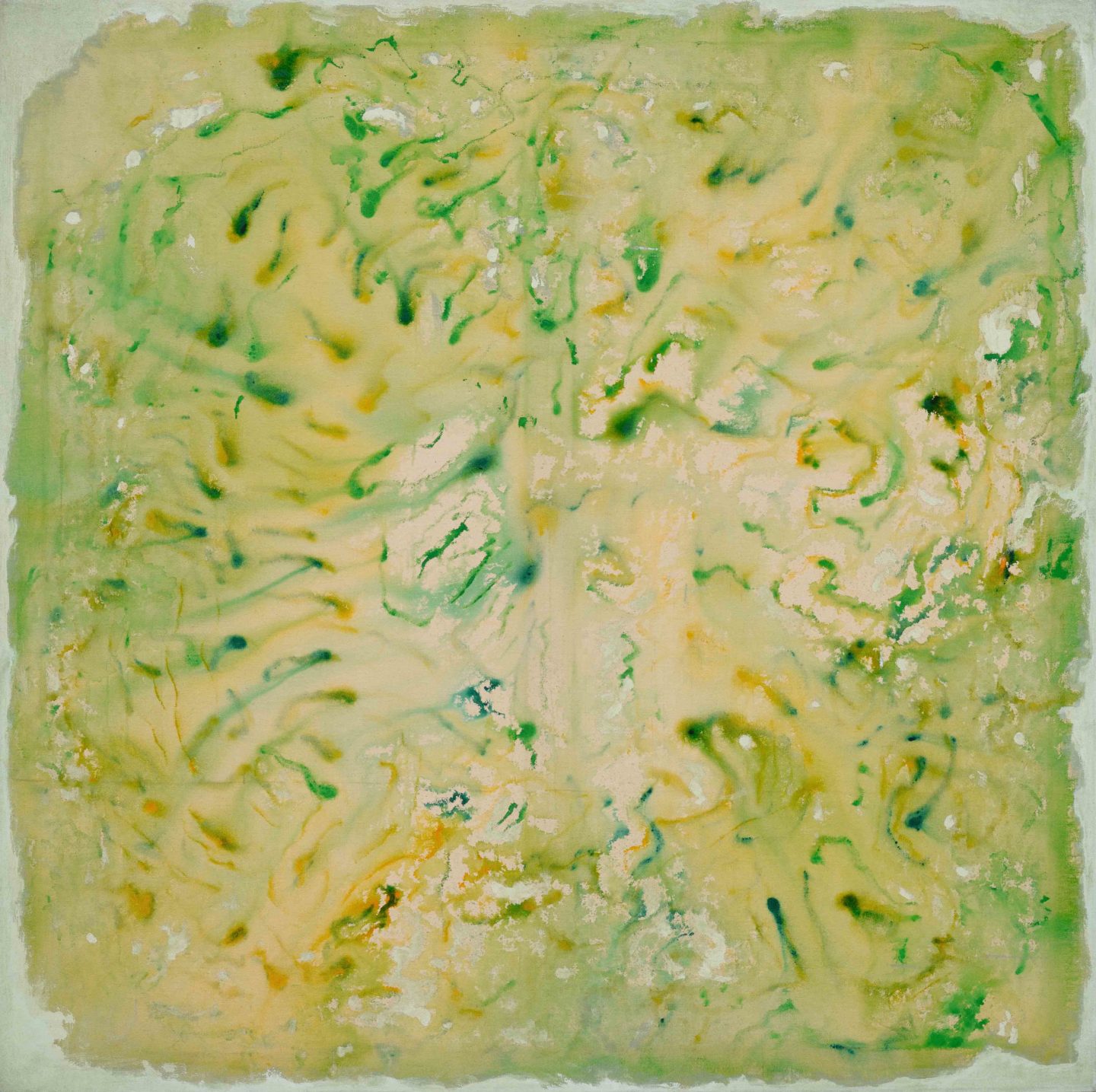Hedda Sterne Untitled 1967
Acrylic on canvas
137.16 x 137.16 cm
54 x 54 in
(HS 36)
About the artist
Hedda Sterne was born in Bucharest, Romania in 1910. She was a part of the city’s thriving avant-garde community during the interwar period and was mentored by Dada co-founder Marcel Janco and Surrealist Victor Brauner. Between 1927 and 1932 she travelled frequently to Vienna and Paris, where she attended classes in the ateliers of André Lhote and Fernand Léger, and at the Académie de la Grande Chaumière. She studied art history and philosophy at the University of Bucharest from 1929 to 1932. That year, she married Friederich (Fritz) Stern, and during the following decade continued her artist practice while travelling between Bucharest and Paris. In 1938 she was included in the 11th annual Salon des Surindépendants, where her collages draw the attention of Jean Arp and Peggy Guggenheim.
Returning to her family in Bucharest in the lead up to World War II in 1939, Sterne witnessed the Romanian Iron Guard Revolt and Bucharest Pogrom in 1941. Later that year, she was able to travel to Lisbon and from there to New York, where she joined her husband who had left Romania on a business visa in 1940. Sterne established a studio on East 50th Street in 1942, becoming close friends with her neighbours Peggy Guggenheim and Max Ernst. Through Guggenheim she was introduced to artists including Piet Mondrian, André Breton and Marcel Duchamp. Breton and Duchamp included Sterne in the 1942 exhibition First Papers of Surrealism, Sterne’s first group exhibition in the United States.
In 1943, Peggy Guggenheim began to exhibit Sterne’s work at the Art of This Century gallery. That year, she also met Betty Parsons, who would become her long-time gallerist and close friend, and the artist and fellow Romanian émigré Saul Steinberg, who was commissioned as an ensign in the US Naval Reserve and soon departed on active duty. They corresponded regularly over the following year. In the summer of 1944, Sterne’s divorce from Fritz Stafford was finalised. (Fritz and Hedda had changed their German-sounding surname from Stern to Stafford in 1941, though since she had been building her career with her original married name, she soon began to exhibit her work as Hedda Sterne, a nom de plume through the addition of an ‘e’). She married Steinberg in October 1944. While the pair separated in 1960, they were never divorced.
Sterne’s first solo exhibition in the US took place in 1943, organised by Betty Parsons at the Wakefield Gallery. When Parsons opened her own gallery in 1946, Sterne was one of 16 artists represented by the pioneering gallery at its founding, along with Mark Rothko, Barnett Newman and Ad Reinhardt. In 1950, Sterne was named one of the country’s best artists under the age of 36 by Life magazine and that year was one of 28 artists to sign an open letter to the president of the Metropolitan Museum of Art, protesting the museum’s aesthetically conservative group exhibition juries. Life magazine published an article about the letter in a January 1951 issue. Sterne was among 15 of the signatories photographed by Nina Leen for the article. The image, subtitled ‘Irascible Group of Advanced Artists’, includes, among others, Barnett Newman, Mark Rothko, Jackson Pollock, Clyfford Still, Robert Motherwell, Willem De Kooning, Adolph Gottlieb, Ad Reinhardt. Sterne, the only woman, can be seen standing on a table at the very top. The photograph is one of the defining images of the New York School.
In 1963, awarded a Fulbright fellowship in painting, Sterne lived and work for over a year in Venice, where she developed her Vertical-Horizontals. She began a daily practice of meditation in 1966, which became important for the rest of her life. Sterne continued to make paintings, drawings and prints, exhibiting widely through to the 2000s. She died in New York in 2011 at the age of 100.
Retrospective exhibitions have been mounted at the Montclair Art Museum, New Jersey in 1977 and at the Queens Museum in Flushing Meadow, New York in 1985. Hedda Sterne: Dessins (1939–1998), a retrospective of drawings, was held at Bibliothèque Municipale, Ville de Caen, in 1998. Uninterrupted Flux: Hedda Sterne, A Retrospective was held at the Krannert Art Museum, University of Illinois at Urbana-Champaign in 2006, touring in 2007 to the University of Virginia Art Museum, Charlottesville, Virginia. Sterne’s work has enjoyed increased critical visibility in recent years, featuring in major group exhibitions and museum displays, such as The Form of Freedom: International Abstraction after1945 at Museum Barberini, Potsdam (4 June–25 September 2022); Midcentury Abstraction: A Closer Look at the Yale University Art Gallery (2022); Elles font l’abstraction at Centre Pompidou, Paris (2021); Labyrinth of Forms: Women and Abstraction, 1930-1950 at the Whitney Museum of American Art, NY (2021-22); Affinities for Abstraction: Women Artists on Eastern Long Island, 1950–2020, at Parrish Art Museum, NY (2021); Epic Abstraction: Pollock to Herrera at The Met Fifth Avenue, NY (2018–20); Hedda Sterne: Printed Variations at Amon Carter Museum of American Art, TX (2018-19); Making Space: Women Artists and Postwar Abstraction at MoMA, NY (2017). A solo exhibition was held at Victoria Miro in London in 2020.
Her works are represented in major international collections including The Art Institute of Chicago, Carnegie Museum of Art, Pittsburgh, the National Gallery of Art, and the Smithsonian American Art Museum, Washington, D.C., The Metropolitan Museum of Art, Whitney Museum of American Art and the Museum of Modern Art, New York, Musée National d’Art Moderne, Centre Pompidou, Paris, France, and Tate, UK.
